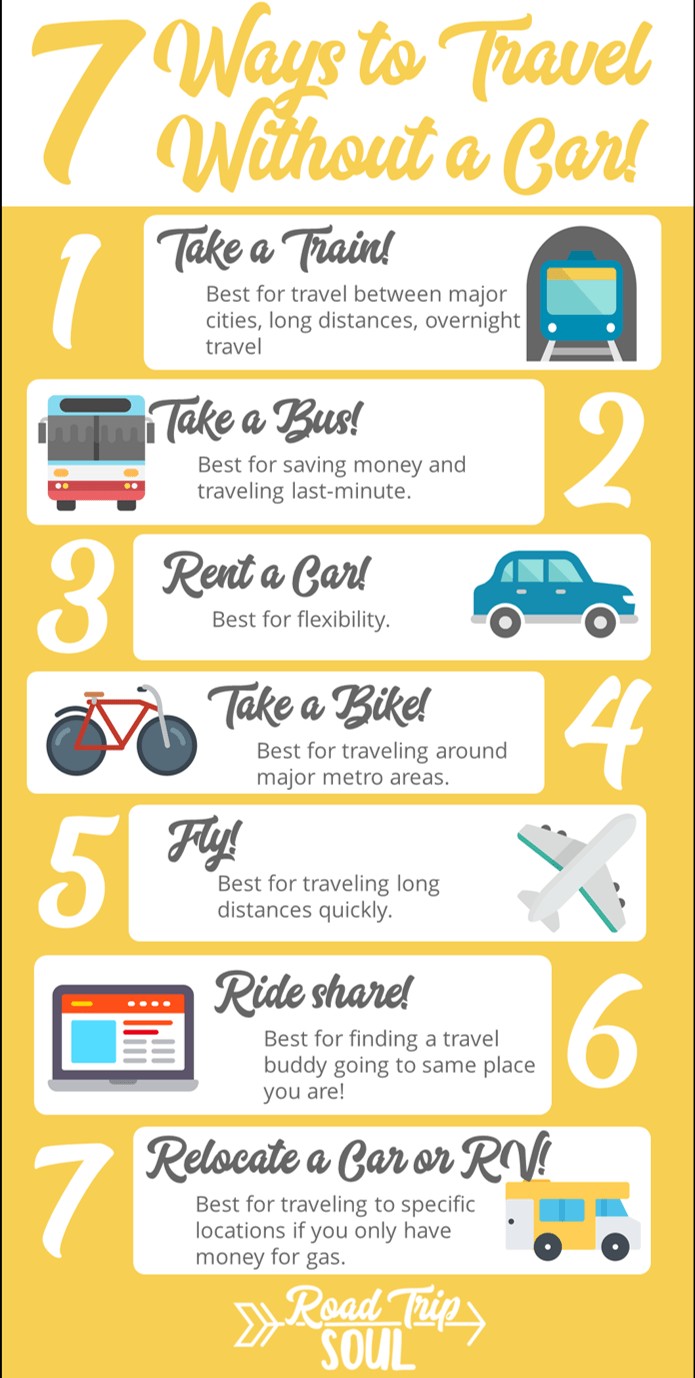Planning a trip but don’t own a car, or simply prefer not to drive? You’re not alone! Traveling without a car opens up a world of possibilities and can even enhance your travel experience. This guide explores seven fantastic alternatives to driving, providing you with the resources and inspiration to embark on car-free adventures.
1. Embrace the Rails: Train Travel
Train travel offers a classic and comfortable way to traverse the landscape without getting behind the wheel. Imagine watching scenic vistas glide by as you relax in your seat. Services like Amtrak in the US and national rail networks in other countries provide extensive routes and schedules. Check their websites for destinations, timetables, and ticket prices. Train journeys offer a unique perspective and allow you to avoid the stress of driving.
2. Hop on the Bus: Affordable and Accessible
Bus travel remains a cost-effective and widely available option for reaching destinations, especially those not served by train lines. Companies like Greyhound offer numerous routes, and local bus services can connect you to smaller towns and attractions. Be prepared for potentially longer travel times and more frequent stops compared to driving, but enjoy the opportunity to relax, read, or catch up on work while someone else takes the wheel.
 Greyhound bus traveling on a highway at sunset
Greyhound bus traveling on a highway at sunset
3. Rent a Car: Temporary Wheels for Specific Needs
If you need the flexibility of a car for certain legs of your journey or when you arrive at your destination, renting a car is a practical solution. This is especially useful if you don’t own a car, want to avoid adding mileage to your personal vehicle, or need a larger vehicle to accommodate a group. Explore rental options from major companies like Hertz, Avis, and Enterprise. Consider car-sharing services like Zipcar for shorter rentals and specific urban needs.
4. Pedal Power: Explore by Bicycle
For shorter distances or exploring local areas, consider the eco-friendly option of traveling by bicycle. Bring your own bike on trains or buses (check for specific policies) or rent one upon arrival. Cycling allows you to experience your surroundings at a slower pace, discover hidden gems, and enjoy a healthy and active form of transportation. Many cities offer bike-sharing programs for convenient and affordable rentals.
5. Take to the Skies: Air Travel for Long Distances
Flying remains the fastest option for covering vast distances. While it might not be the most environmentally friendly choice, it’s often necessary when time is limited. Once you arrive at your destination, explore alternative transportation methods like renting a car, cycling, or using ride-sharing services. Consider flying into smaller regional airports to potentially avoid crowds and access more remote destinations.
 Greyhound bus traveling on a highway at sunset
Greyhound bus traveling on a highway at sunset
6. Share the Ride: Carpooling and Ride-Sharing
Carpooling and ride-sharing services connect you with other travelers heading in the same direction. Websites like BlaBlaCar (depending on your region) facilitate finding rides and sharing travel costs. This option not only saves money but also provides an opportunity to meet new people and reduce your carbon footprint. Always prioritize safety by verifying driver information and choosing reputable platforms.
7. Relocate a Vehicle: Drive Someone Else’s Car
A unique way to travel without owning a car is to relocate vehicles for companies like Auto Driveaway. These services connect drivers with owners who need their cars or RVs transported to different locations. This can be a budget-friendly option, as you may only need to cover fuel costs. Be sure to carefully review the terms and conditions, including mileage restrictions and delivery deadlines.
Traveling without a car is entirely feasible and can even be more enjoyable and enriching than driving. By exploring these alternative transportation methods, you can broaden your travel horizons, reduce your environmental impact, and discover new ways to experience the world.
